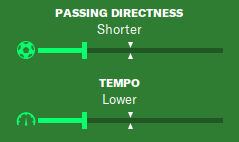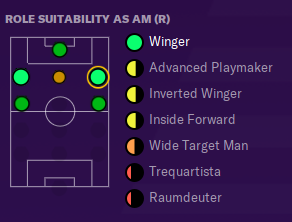Wingback is a versatile position in FM that requires a player to have a combination of defensive and offensive abilities. In this article, we will discuss the role of a Wingback, how it differs from a Fullback, when it should be used, the key attributes required, and the best formations to use a Wingback.
What is a Wingback?
A Wingback is a hybrid position that is half-way between a defender and a winger. Wingbacks are responsible for both attacking and defending and play on the sides of the pitch, near the touchline. They are tasked with providing width and support to the attack while also being able to defend when the opposition has the ball.
How is it different than a Fullback?
While Fullbacks focus on defensive duties, Wingbacks have a more balanced role between attack and defense. Wingbacks are expected to join the attack more frequently and provide more support to the forwards, whereas fullbacks focus on maintaining the balance of the defense. Additionally, Wingbacks have more pace and dribbling ability compared to fullbacks, making them more effective in making overlapping runs.
When should you use a Wingback in FM?
Wingbacks are best used in a formation that requires width and support for the forwards. They are also suitable for teams that rely on overlapping runs and crosses from the wings. Wingbacks can be especially useful in counter-attacking play, as they can quickly transition from defense to attack.
When should you not use a Wingback in FM?
Wingbacks are not ideal for teams that play with a deep defensive line or teams that prioritize solidity in defense over attacking potential. In these cases, fullbacks would be a better option, as they offer a more defensive presence and are better equipped to deal with opposition attacks.
What are the key attributes for a Wingback in FM?
- Pace: A Wingback needs to have pace to make overlapping runs and get back into position quickly.
- Crossing: A Wingback must have the ability to deliver accurate crosses into the box for their forwards to score.
- Dribbling: A Wingback must be able to dribble past opponents and beat them in one-on-one situations.
- Stamina: A Wingback must have high stamina to cover the entire length of the pitch, making runs and tracking back.
What formations work well with Wingbacks?
Wingbacks work well in formations such as the 3-5-2, 3-4-3, and 4-2-3-1. These formations offer the Wingbacks the required width and support, allowing them to join the attack and contribute to the team’s attacking play. Additionally, formations such as the 3-5-2 allow for Wingbacks to play in a more advanced role, giving them more freedom to create scoring opportunities.
Summed up!
The Wingback role in Football Manager is an important and versatile position that can add an extra dimension to your team’s tactics. When used correctly, Wingbacks can provide width, support, and attacking prowess, making them a valuable asset to any team. Make sure to consider the key attributes and best formations when selecting a player for the Wingback role in your Football Manager game.
More posts!
- (no title)
- How to Overcome a Losing Game at the half in Football Manager
- Team instruction: How to use Overlap in FM
- Adding Width: The Wingback role in FM
- Advanced Playmaker in Football Manager



